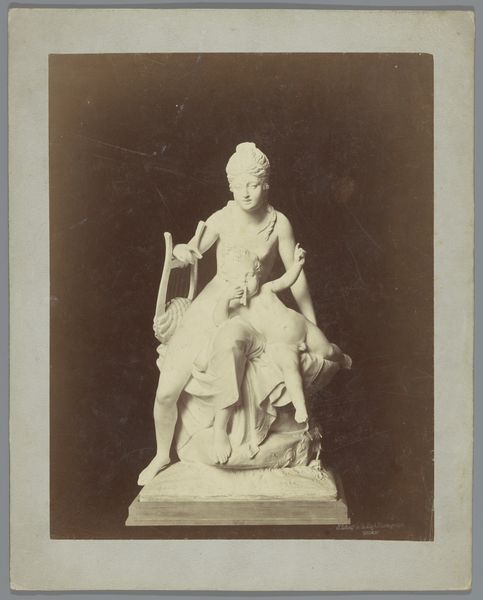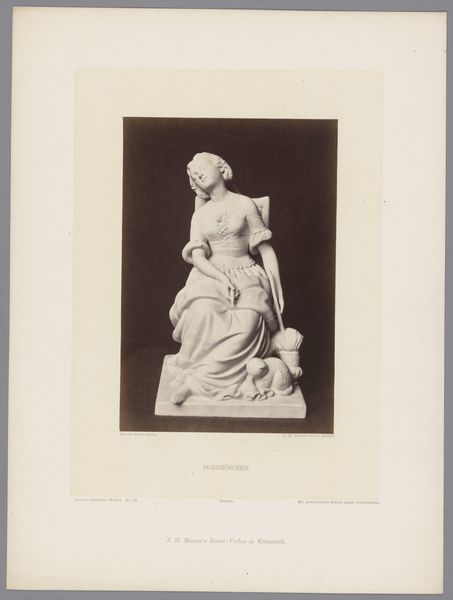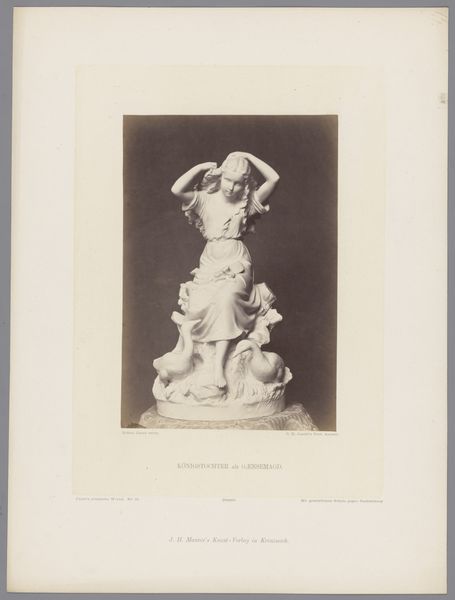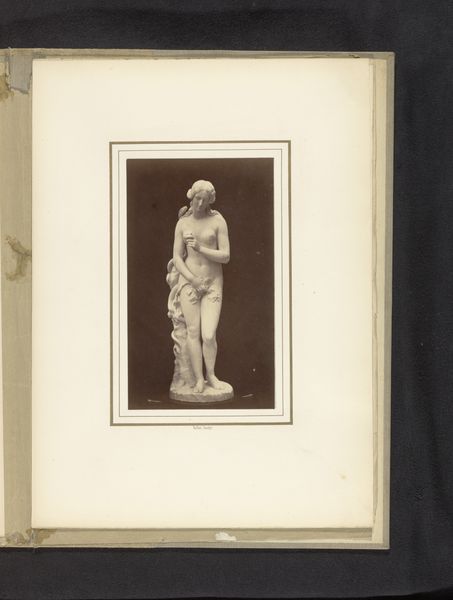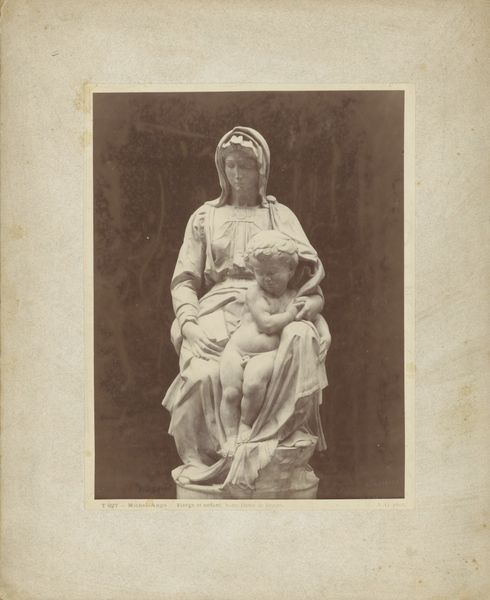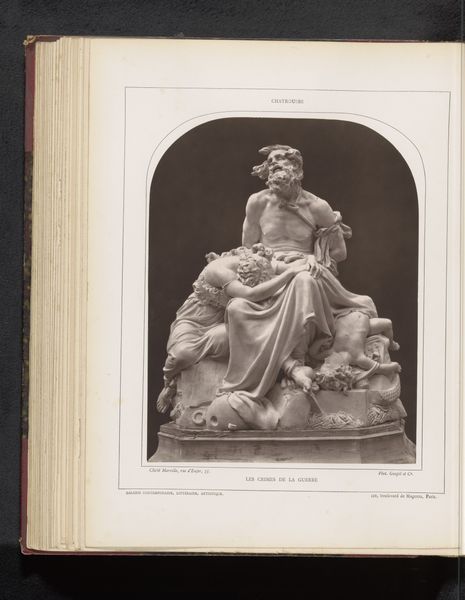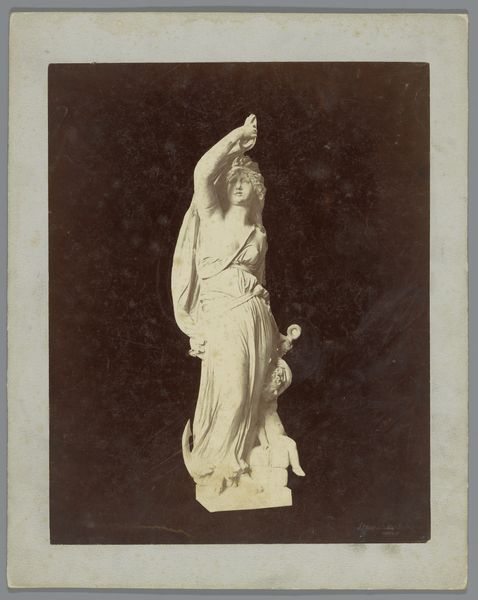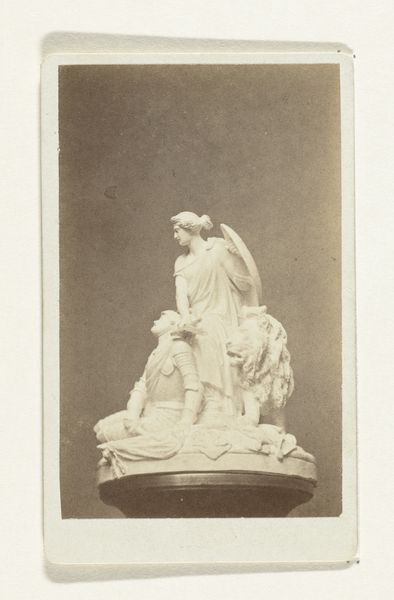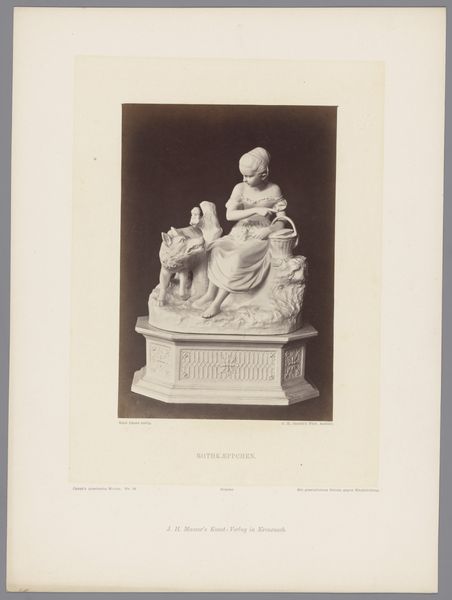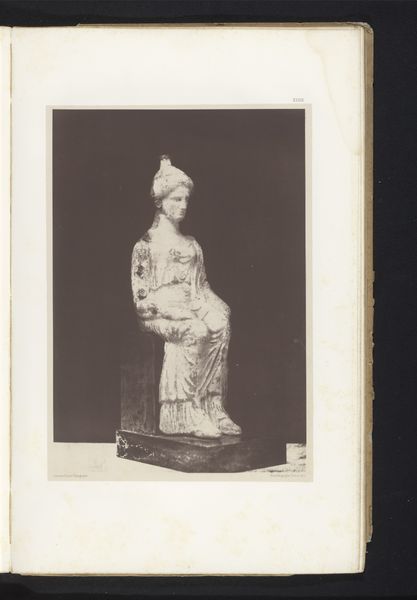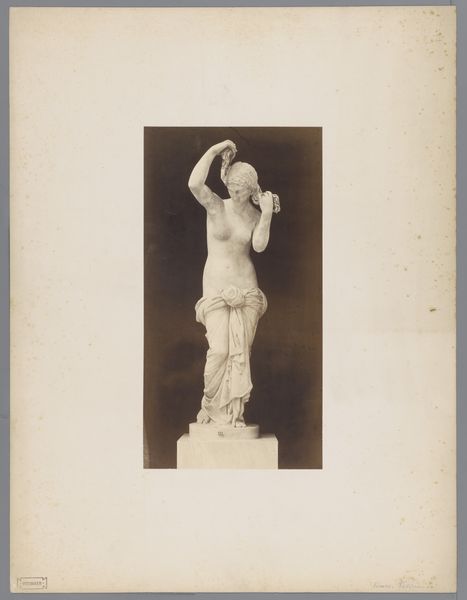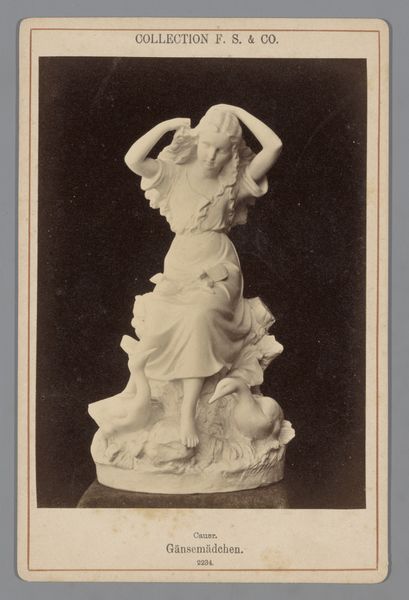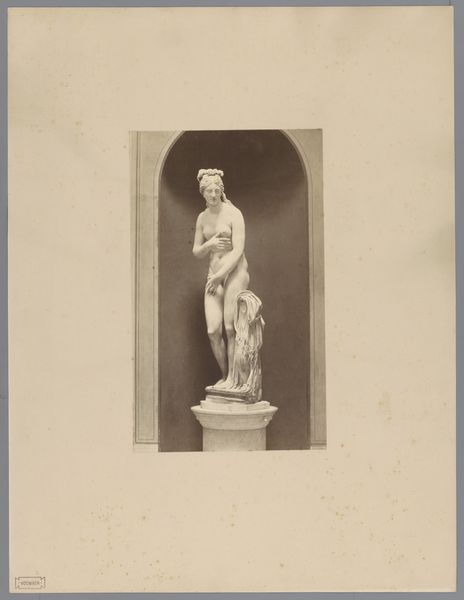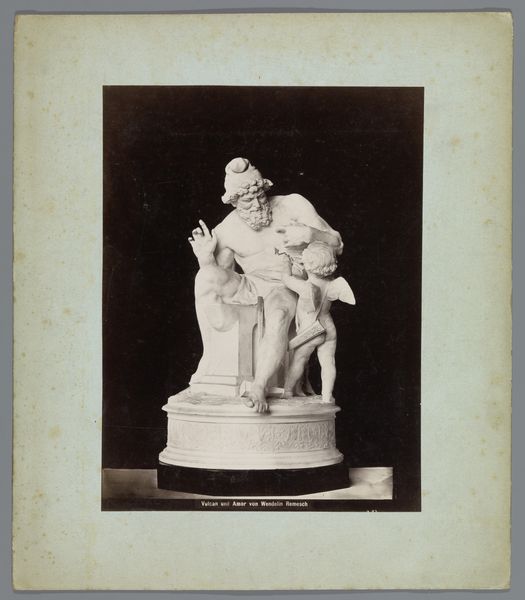
Sculptuur van een personificatie van het werelddeel Afrika door Antonín Pavel Wagner c. 1875 - 1900
0:00
0:00
sculpture, marble
#
portrait
#
ancient-mediterranean
#
sculpture
#
19th century
#
history-painting
#
academic-art
#
marble
#
statue
Dimensions: height 255 mm, width 203 mm
Copyright: Rijks Museum: Open Domain
Curator: Before us, we have Antonín Pavel Wagner's marble sculpture, "Sculpture of a Personification of the Continent Africa," estimated to have been created between 1875 and 1900. Editor: It’s quite striking, this allegorical figure. A female figure with distinctly Egyptian headwear seated beside a pharaoh’s head. It carries an air of ancient grandeur and exoticism, doesn't it? Curator: Absolutely. The academic style, the choice of marble—it speaks volumes about 19th-century artistic production. We see this object as a finished product, but think about the quarry, the tools, the labor… Editor: While the means of production are interesting, consider how Wagner deploys powerful symbols. The headdress and placement beside the pharaoh create a clear visual link with ancient Egypt and royal authority. Doesn’t this immediately trigger associations with wisdom and timeless power? Curator: Indeed, it positions Africa through a very specific lens. It also brings up the complicated history of how Europeans defined other cultures in the 19th century through the industrial production of images and objects, and these ideas then gain power from repeated representation in art and culture. Editor: A Western lens, undeniably. This work reinforces European fascination with an imagined, timeless "Africa." It reminds us how artistic representation shaped, and continues to shape, cultural perceptions and perhaps even misperceptions. Curator: Exactly. Marble, revered and valuable, was carefully chosen to imbue the figure with prestige but, it's a world apart from, say, a wood sculpture carved locally within a tradition deeply embedded in the place. Consider how those differences play into value judgements and cultural appropriation. Editor: It’s thought-provoking how symbols of royalty and the Western artistic medium can be used to encapsulate an entire continent in such a way, prompting further questions about what cultural messages such choices deliver. Curator: Considering it from a materialist perspective, it urges us to see this artwork not just as a symbol of Africa, but as a product that had social ramifications and was circulated to solidify ideologies in a certain moment of time. Editor: Indeed. This sculpture offers a compelling glimpse into history, revealing the complex interplay of artistic symbolism and cultural construction. Curator: And by studying its creation and the materiality behind it, we’re invited to analyze its production as a social artifact that tells the viewer more than one story.
Comments
No comments
Be the first to comment and join the conversation on the ultimate creative platform.
